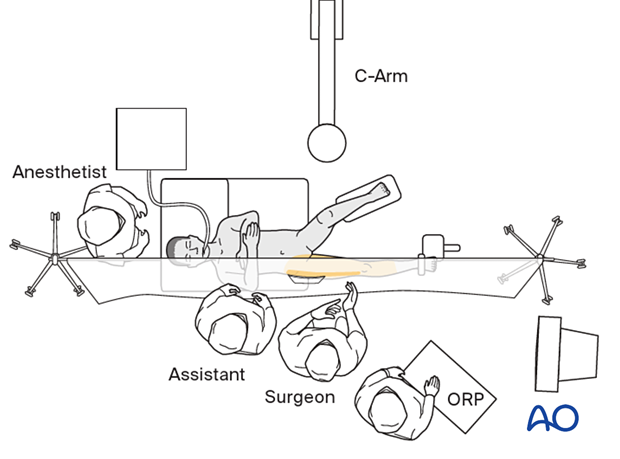Patient preparation in supine position
1. Introduction
Most procedures can be performed with the limb free, prepped and draped from groin to toes. ALFN is usually performed on a traction table with the draping modified accordingly.
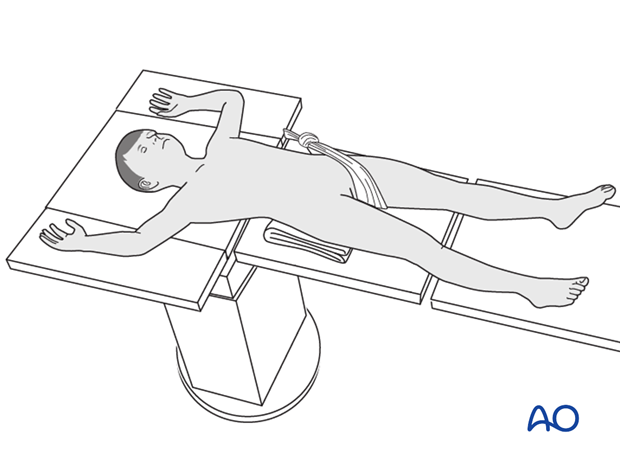
2. Preoperative preparation
Read the additional material on preoperative preparation.
3. Anesthesia
- General anesthesia
- Local nerve block in addition to pain management
- Combination of nerve block and light general anesthesia
4. Prophylactic antibiotics
Antibiotics are administered according to local antibiotic policy and specific patient requirements.
Many surgeons use Gram-positive prophylactic antibiotic cover for operative management of closed fractures, adding Gram-negative prophylactic cover for open fractures.
Antibiotic therapy will never compensate for poor surgical technique.
5. Clinical assessment of rotation of the femur
Prior to patient preparation and draping, examine the opposite intact femur to determine the rotational range-of-motion.
If the patient is supine, demonstrate femoral rotation with the hip and knee each flexed to 90°.
Internally and externally rotate the femur and record the maximum range.
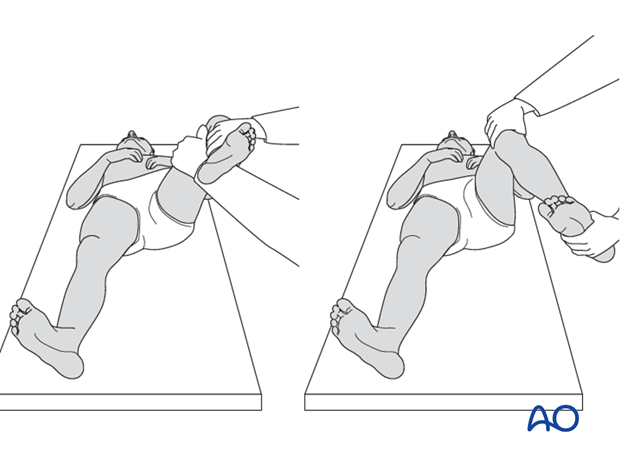
6. Patient and C-arm positioning
Place the patient supine on a radiolucent fracture table with a sheet placed around the pubic bone for countertraction.
A small support on the ipsilateral buttock may be helpful to stabilize the pelvis during the procedure.

The C-arm comes in from the uninjured side.
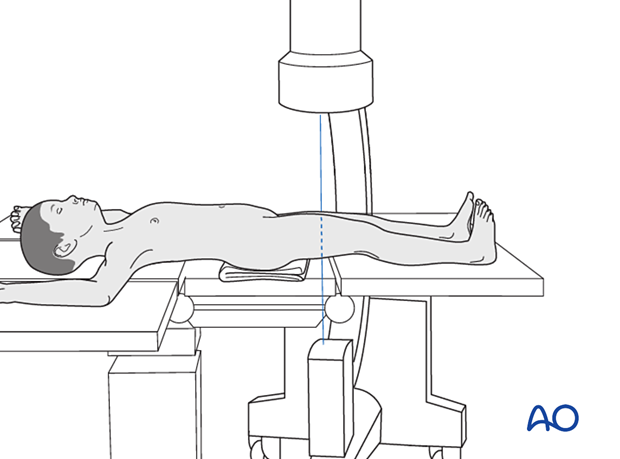
As an alternative for ALFN, the patient may be placed on a traction table with a unilateral leg support for optimal radiographs in AP and lateral views.
When positioning the patient check the rotational alignment of the uninjured femur.
Indirect reduction takes place by traction.
The C-arm comes in from the uninjured side.

7. Skin preparation and draping
Prepare the entire leg down to the foot.
Drape the entire leg up to the pelvis with the foot placed in a sterile bandage. If using a radiolucent table, consider also preparing and draping the uninjured side for intraoperative comparison of rotational alignment.
Drape the C-arm in a conventional manner.

For ALFN, prepare the entire leg down to the foot.
Drape the operative field with a plastic occlusion drape with the foot placed in the traction device.
Drape the C-arm in a conventional manner.
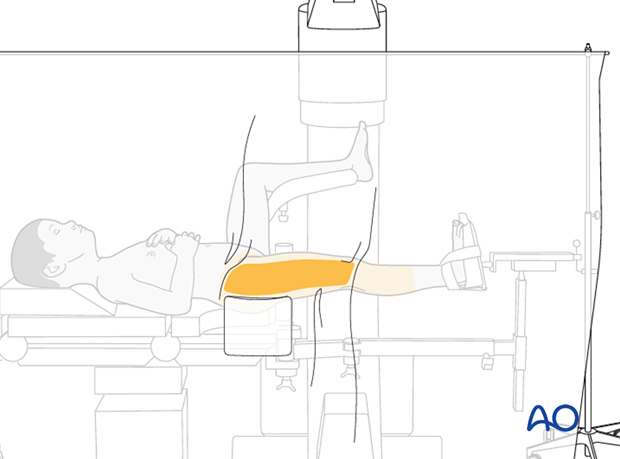
8. OR set-up
The optimal position of the surgeon is on the injured side of the patient.
The position of the screen should allow a direct view for the surgeon.
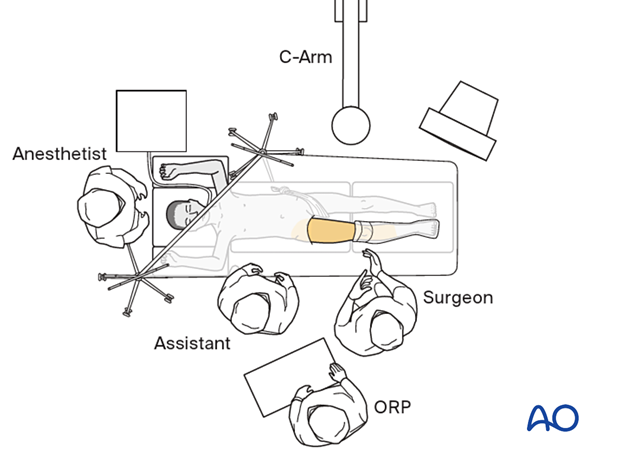
OR set-up for ALFN
